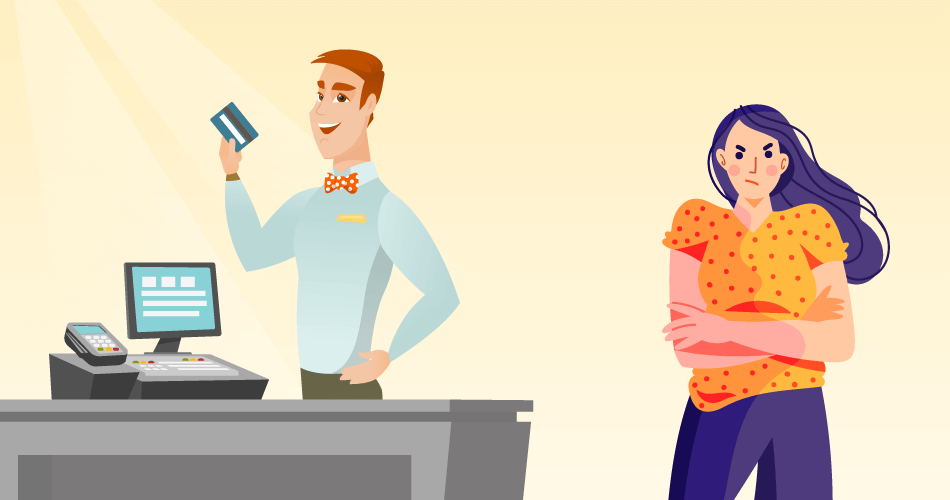
Credit card chargebacks are an unfortunate reality of business that cause you stress and hurt your bottom line.
A chargeback is when a customer purchases your product or service and asks their bank to reverse the charge. This means that you lose the sale and whatever you send to the customer.
While this may seem like a malicious action, only 10% of chargebacks are because of criminal fraud. Most chargebacks are initiated for other reasons and can usually be attributed to miscommunication, customer error, or friendly fraud.
Understanding what leads to a chargeback can help you be prepared and prevent them from happening. Some chargebacks are inevitable, but you can mitigate the total damage to your business.
Let’s take a look at the four most common reasons for a customer chargeback.
Miscommunication
Miscommunication is a major reason for a customer chargeback. This can manifest in several different ways.
For example, your description of the product or services may not perfectly align with what a customer has in mind. As a result, they may file a chargeback due to a product not being as described.
Furthermore, if you’re shipping something to a customer and it takes longer than they expect, they might assume it isn’t coming and request a chargeback.
Lack of communication between you and a buyer is dangerous because it leaves their decisions up to what they interpret is happening.
Because of this, you should have a clear avenue of communication and keep them fully informed of the product or service that they have purchased.
Customer Error
A large percentage of chargebacks can also be traced back to customer error.
You’re likely to have a wide variety of customers from different sources and this means that you might deal with some that are prone to making mistakes.
For example, a customer may purchase a product and then forget about it later. They’ll notice the charge on their bank statement and won’t remember that they made the purchase.
There’s also the possibility of someone lending their card to a friend or family member for a purchase and not recognizing the charge later.
Customers are sure to make errors and this is something that you need to take into account. Thorough documentation is your best friend here because you can prove and dispute a chargeback that is caused by customer error.
Friendly Fraud
We mentioned earlier that criminal fraud is a minor percentage of chargebacks, but friendly fraud is a different type that is more prevalent.
The most common situation involved with friendly fraud is purchasing a product then opting to make a chargeback rather than requesting a return or refund.
The problem with friendly fraud is that it is difficult to comprehend whether a customer is intentionally trying to rip you off. You might have a customer that genuinely believes a chargeback is the same as requesting a refund.
On the other hand, certain customers set out to deceive you. They’ll purchase a good and wait until it arrives before filing for a chargeback. This allows them to keep the product and their money.
Another situation like this involves businesses that use a subscription model. A customer may wish to cancel their service, but forget to do it and opt for a chargeback to recoup their subscription fee.
To combat this, make your return policies obvious and easily accessible. If you use a subscription model, make cancellation straightforward. While returns and cancellations are annoying, they’re much better than receiving a chargeback!
Malicious Fraud
Finally, malicious fraud does result in chargebacks.
The way this works is a little complicated, but it involves a fraudster purchasing goods under a different identity.
To illustrate this, picture yourself having your credit card information stolen. Someone else has access to your funds and can make purchases with them. They will buy goods and services as they please because it’s coming out of your account.
When you eventually take notice of this, your reaction is going to be to charge back all of the purchases that you didn’t make. While this is an innocent move on your part, it affects the business that you’re making a chargeback against.
Identity theft does happen and it can affect anyone. When you’re dealing with a customer that is the victim of identity theft, you’re going to suffer because you’re losing a product and the revenue from its sale.
Closing Thoughts
Credit card chargebacks happen for many different reasons and their impact on your business is inevitable.
Because of this, you need to do your best to limit how many and how often chargebacks are made to your business. Not only are you losing revenue, but excessive chargebacks can result in penalties like losing your merchant account and being added to Member Alert to Control High-Risk (MATCH).
A few common reasons for chargebacks include miscommunication, customer error, friendly fraud, and criminal fraud. Understanding this can help you identify what to focus on in efforts to limit the number of chargebacks that you deal with.
Some chargebacks are unavoidable, but you should make a point of trying to minimize them as much as possible!




